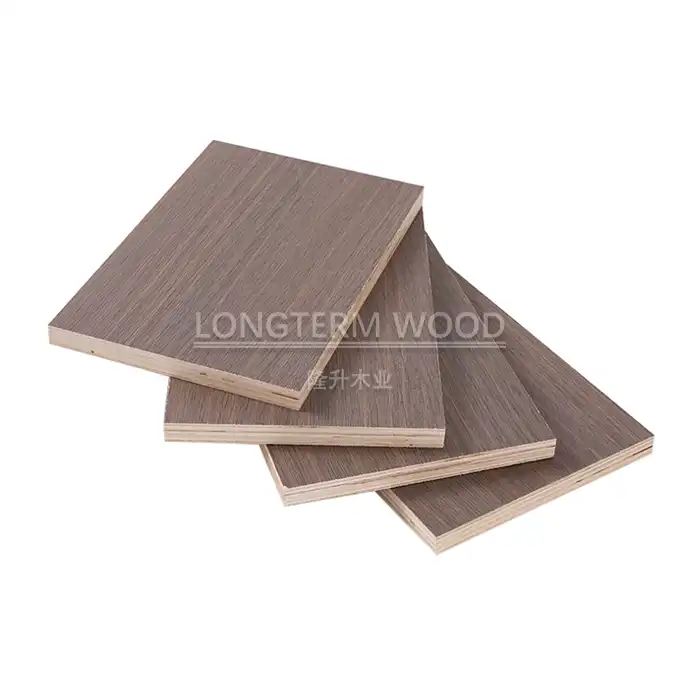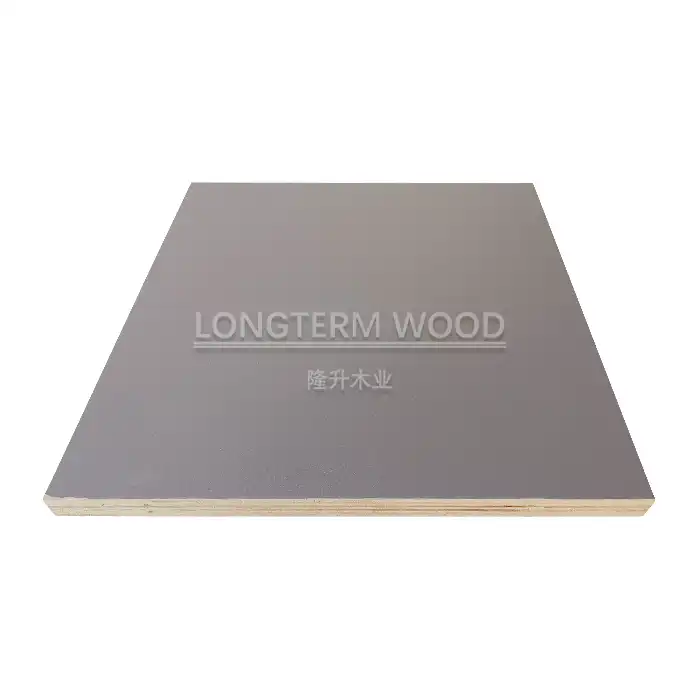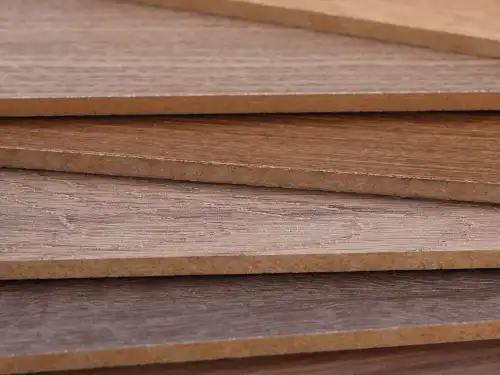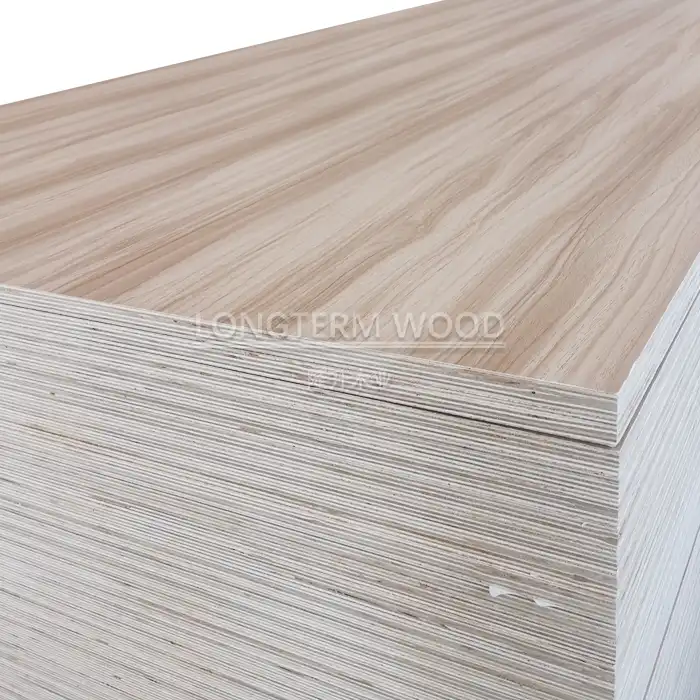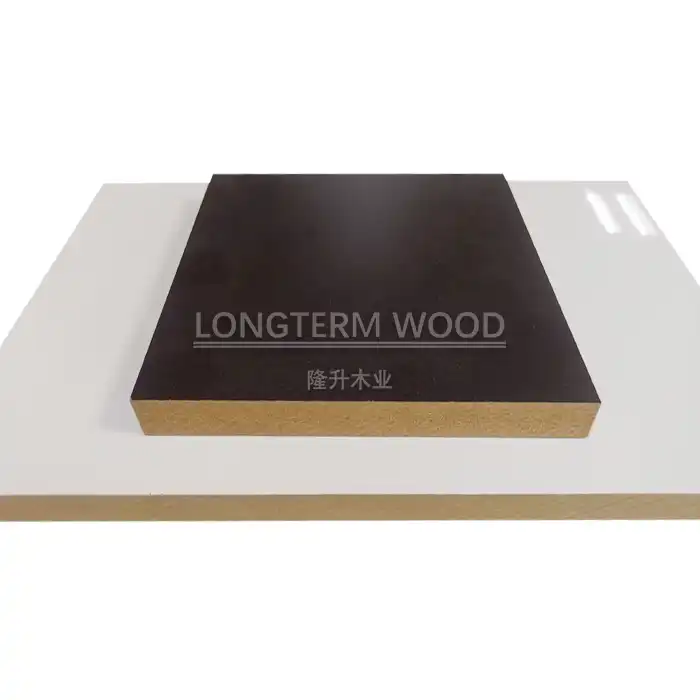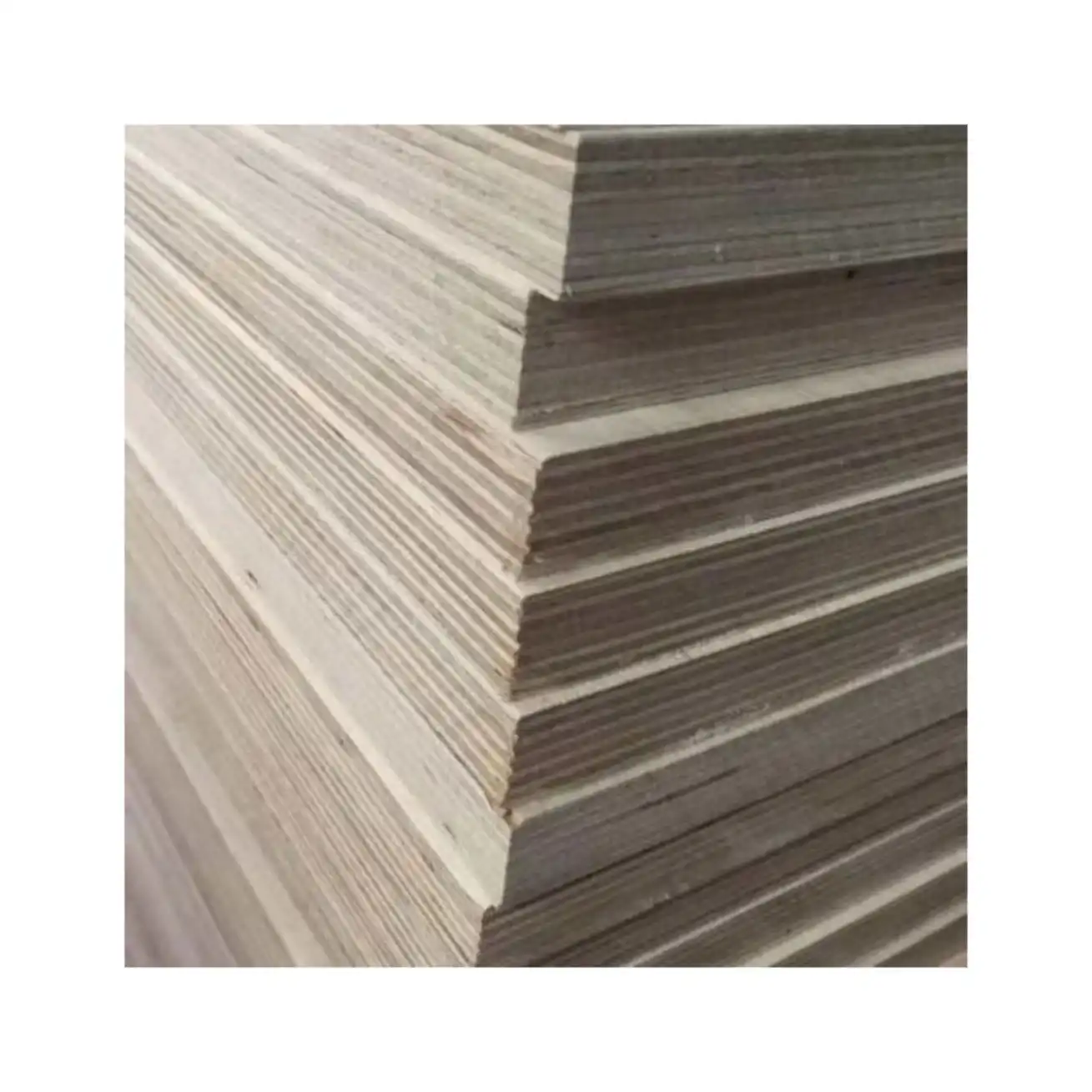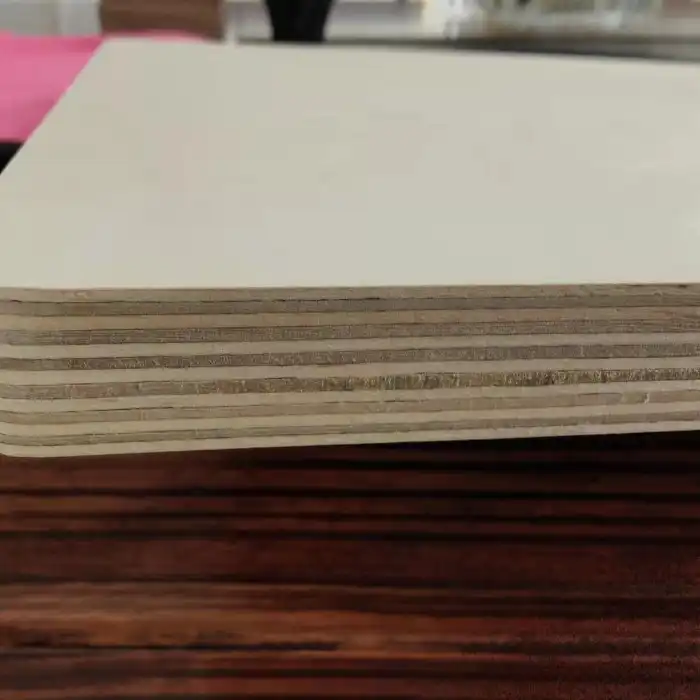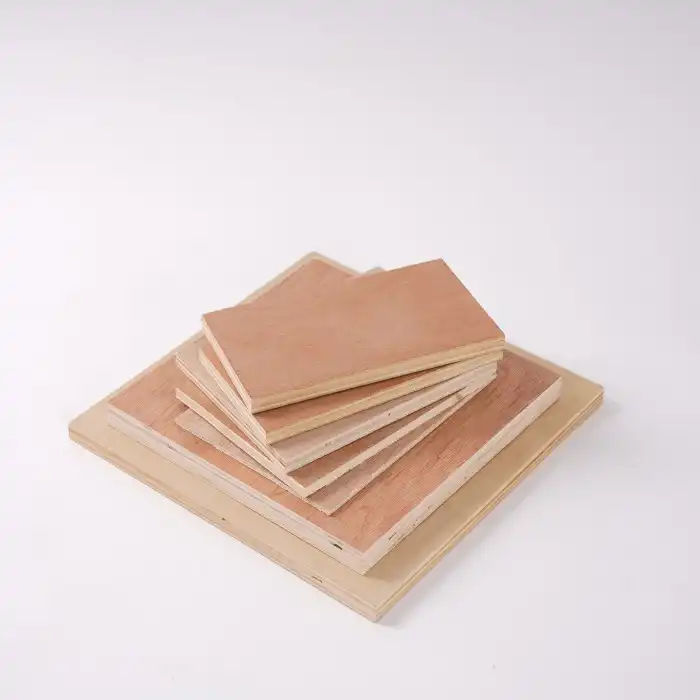
Why Choose Water-Resistant Melamine Plywood for Bathrooms?
2025-05-15
When designing or renovating a bathroom, choosing the right materials is crucial for both functionality and aesthetics. Bathrooms present unique challenges due to high humidity, frequent moisture exposure, and temperature fluctuations. Water-resistant melamine plywood has emerged as an exceptional solution for bathroom cabinetry, vanities, and other fixtures. This specialized material combines the durability of melamine coating with the structural integrity of plywood, creating a product that withstands bathroom conditions while maintaining its appearance and performance over time.
The Unique Advantages of Melamine Plywood in Moisture-Rich Environments
Superior Moisture Resistance Properties
Water-resistant melamine plywood represents a significant advancement in bathroom construction materials. Unlike standard wood products that absorb moisture, swell, and eventually deteriorate in humid environments, melamine plywood features a protective resin coating that creates an effective moisture barrier. This specialized coating prevents water penetration into the core layers, maintaining structural integrity even in the high-humidity conditions typical of bathrooms. The manufacturing process involves impregnating paper with melamine resin and then thermally fusing it to the plywood substrate under high pressure. This creates a sealed surface that repels water rather than absorbing it, making melamine plywood particularly suited for bathroom vanities, cabinets, and other fixtures that frequently encounter water splashes. The non-porous surface also prevents the growth of mold and mildew, common problems in bathroom environments that can compromise both the appearance of fixtures and indoor air quality. Homeowners and designers increasingly choose melamine plywood for bathroom applications precisely because it maintains its appearance and structural integrity throughout years of exposure to moisture and humidity fluctuations.
Enhanced Durability and Longevity
The exceptional durability of melamine plywood makes it an ideal material for bathroom applications where longevity is essential. The hard, wear-resistant melamine surface successfully withstands daily use while protecting the plywood core from damage. This remarkable resilience comes from the melamine resin's inherent hardness—it ranks highly on material hardness scales, providing robust protection against scratches, impacts, and abrasion that would mar conventional wood surfaces. In bathroom environments, this durability translates to cabinetry and fixtures that maintain their appearance despite constant use. The protective layer also prevents chemical damage from cleaning products commonly used in bathrooms, ensuring the surface remains unmarred even after years of regular maintenance. High-quality melamine plywood from manufacturers like Linyi Longterm Wood Industry maintains its structural integrity and appearance far longer than standard wood products in humid environments. This extended lifespan ultimately delivers greater value, as bathroom fixtures constructed from melamine plywood require less frequent replacement and maintain their aesthetic appeal throughout their service life. The combination of moisture resistance and wear resistance makes melamine plywood a superior choice for bathroom applications where materials are continuously challenged by environmental conditions.
Design Versatility and Aesthetic Appeal
Melamine plywood offers remarkable design flexibility for bathroom applications, combining practical water resistance with diverse aesthetic options. Unlike some utilitarian water-resistant materials that limit design possibilities, melamine plywood is available in an extensive range of colors, patterns, and textures that can complement any bathroom design theme. From sleek, glossy white finishes that create a contemporary minimalist look to warm wood-grain textures that introduce natural elements into the space, the design possibilities are virtually limitless. This versatility allows designers and homeowners to create custom bathroom cabinetry, vanities, shelving, and decorative elements that perfectly match their vision without compromising on moisture resistance. The surface quality of high-quality melamine plywood from manufacturers like Linyi Longterm Wood Industry is consistently smooth and uniform, providing an ideal canvas for both bold statement pieces and subtle complementary fixtures. The UV-resistant properties of premium melamine finishes also ensure that colors remain vibrant and true, even in bathrooms with significant natural light exposure. Additionally, the clean, non-porous surface of melamine plywood contributes to the overall hygienic environment of the bathroom while maintaining its visual appeal. This combination of practical water resistance and design flexibility makes melamine plywood an exceptional choice for creating beautiful, functional bathroom spaces that stand the test of time.
Practical Applications of Water-Resistant Melamine Plywood in Bathroom Design
Custom Bathroom Cabinetry and Storage Solutions
Water-resistant melamine plywood has revolutionized the approach to bathroom cabinetry, offering a perfect balance of functionality and aesthetic appeal in moisture-prone environments. Bathroom cabinets and storage solutions face significant challenges from humidity, direct water exposure, and temperature fluctuations—conditions that would quickly deteriorate conventional wood products. Melamine plywood cabinetry, however, maintains its structural integrity and appearance despite these harsh conditions. The non-porous melamine surface prevents moisture absorption that would otherwise cause warping, swelling, or delamination in traditional materials. This moisture resistance is particularly valuable around sink areas where water splashes are frequent. Custom bathroom vanities constructed from melamine plywood provide durable under-sink storage while maintaining their appearance despite proximity to water sources. The material's stability also ensures that cabinet doors and drawers continue to function properly without sticking or misalignment issues that plague less suitable materials in humid environments. Manufacturers like Linyi Longterm Wood Industry offer melamine plywood with specially formulated water-resistant adhesives between plies, further enhancing the material's performance in bathroom applications. The dimensional stability of quality melamine plywood means that precisely fitted bathroom storage solutions—including medicine cabinets, linen closets, and specialized organizers—retain their exact dimensions despite humidity fluctuations, ensuring doors and drawers operate smoothly throughout their lifetime.
Shower and Bath Surrounds
Water-resistant melamine plywood presents an innovative solution for shower and bath surrounds, offering design flexibility that traditional bathroom materials cannot match. In areas with direct water exposure, the protective melamine coating creates an effective barrier that shields the plywood substrate from moisture penetration. High-quality melamine plywood panels can be used to create seamless shower wall surrounds that resist warping and deterioration despite constant exposure to water and steam. The smooth, non-porous surface of melamine plywood is not only water-resistant but also inhibits the growth of mold and mildew—persistent problems in shower environments that compromise both appearance and indoor air quality. The material's excellent moisture resistance makes it suitable for creating custom bath panels that maintain their appearance despite proximity to splashing water. Advanced manufacturing techniques employed by companies like Linyi Longterm Wood Industry ensure that the melamine coating is thoroughly bonded to the plywood substrate, creating a robust composite material that withstands the rigors of bathroom environments. When properly sealed at joints and edges, melamine plywood shower surrounds provide a durable, attractive alternative to conventional materials. The wide range of available finishes allows for creative expression in shower design, from contemporary solid colors to realistic stone and wood effects. This design versatility, combined with practical water resistance, makes melamine plywood an excellent choice for creating distinctive shower and bath surrounds that remain beautiful and functional for years.
Decorative Wall Panels and Ceiling Applications
Water-resistant melamine plywood offers exceptional opportunities for creating stunning decorative wall panels and ceiling applications in bathroom environments. The material's inherent moisture resistance makes it ideal for these applications, where conventional wood products would quickly deteriorate from humidity exposure. Decorative wall panels crafted from melamine plywood introduce texture, color, and visual interest while maintaining their dimensional stability and appearance despite bathroom humidity. The melamine surface provides an effective barrier against moisture penetration, preventing the warping, swelling, and delamination that would affect standard wood panels. This stability enables the creation of intricate wall patterns and designs that remain precisely aligned over time. For ceiling applications, melamine plywood panels offer a practical alternative to traditional materials that often suffer from moisture damage. The lightweight yet rigid structure of melamine plywood makes installation easier while providing excellent durability in steam-filled environments. Manufacturers like Linyi Longterm Wood Industry offer specialized melamine plywood with enhanced moisture resistance specifically engineered for bathroom applications, ensuring optimal performance in these challenging environments. The wide array of available finishes—from subtle textures to bold patterns—allows for creative expression in bathroom design without compromising functionality. The smooth, sealed surface of melamine plywood also simplifies cleaning and maintenance, an important consideration for bathroom wall and ceiling applications where condensation and splashing water can create cleaning challenges. With proper installation techniques and edge sealing, melamine plywood wall and ceiling panels maintain their appearance and performance throughout years of exposure to bathroom conditions.
Environmental and Health Considerations for Bathroom Materials
Low Formaldehyde Emissions and Indoor Air Quality
The environmental and health aspects of bathroom materials are increasingly important considerations, particularly regarding indoor air quality in these enclosed spaces. Premium water-resistant melamine plywood stands out as an environmentally responsible choice due to its low formaldehyde emissions, which contribute to healthier bathroom environments. Leading manufacturers like Linyi Longterm Wood Industry adhere to stringent E1 and E0 emission standards, ensuring their melamine plywood products release minimal formaldehyde into the indoor environment. This commitment to low emissions is particularly valuable in bathroom spaces, which typically have limited ventilation and where occupants may spend extended periods in close proximity to cabinetry and fixtures. The manufacturing process for quality melamine plywood incorporates eco-friendly adhesives that bond the layers together without introducing harmful levels of volatile organic compounds (VOCs). The melamine surface itself creates an effective seal that further reduces any potential emissions from the substrate materials. This results in bathroom fixtures that contribute positively to indoor air quality rather than introducing airborne pollutants. For individuals with respiratory sensitivities or allergies, low-emission melamine plywood provides an important health benefit in the bathroom environment. The non-porous nature of the melamine surface also prevents the absorption of moisture and organic materials that could otherwise support mold growth and associated air quality issues. By choosing certified low-emission melamine plywood for bathroom applications, designers and homeowners can create spaces that support both environmental sustainability and occupant health.
Easy Cleaning and Hygiene Maintenance
The non-porous nature of melamine plywood makes it exceptionally well-suited for maintaining hygiene in bathroom environments, where cleanliness is paramount. Unlike porous materials that absorb moisture and harbor bacteria, the sealed melamine surface creates a barrier that prevents the penetration of water, oils, and organic materials that could support microbial growth. This inherent resistance to absorption makes melamine plywood bathroom fixtures significantly easier to clean and maintain in a hygienic condition. The smooth, uniform surface of quality melamine plywood from manufacturers like Linyi Longterm Wood Industry allows for effortless cleaning with standard household products, without the need for specialized cleaners or intensive scrubbing that might damage other materials. The surface resists staining from common bathroom products such as cosmetics, toothpaste, and soap, maintaining its appearance with minimal maintenance effort. Additionally, melamine plywood doesn't develop the microscopic cracks and fissures that can harbor bacteria in other materials, contributing to a more hygienic bathroom environment. The material's resistance to moisture also prevents the development of mold and mildew—persistent problems in bathroom environments that can compromise both appearance and health. For households with children, elderly members, or individuals with compromised immune systems, the hygienic properties of melamine plywood provide valuable peace of mind. The material's durability ensures that even frequent cleaning with disinfectants doesn't degrade the surface over time, maintaining both appearance and hygienic properties throughout its service life. This combination of easy cleaning and inherent resistance to microbial growth makes melamine plywood an excellent choice for creating bathroom spaces that remain both beautiful and hygienic with minimal maintenance effort.
Sustainable Manufacturing Practices
Environmental consciousness has become increasingly important in material selection for bathroom renovations, driving interest in sustainably manufactured options like water-resistant melamine plywood. Leading manufacturers such as Linyi Longterm Wood Industry implement responsible practices throughout their production processes to minimize environmental impact while creating durable, high-performance bathroom materials. Sustainable forestry practices form the foundation of environmentally responsible melamine plywood production, with manufacturers sourcing wood from certified forests managed for long-term ecological health rather than from old-growth or protected areas. The manufacturing process maximizes material efficiency by utilizing the entire log and minimizing waste—scraps and trimmings are often repurposed into smaller components or processed into biofuel for energy generation. Advanced production technologies employed in modern melamine plywood manufacturing significantly reduce energy consumption compared to traditional methods, decreasing the carbon footprint associated with production. Water-based adhesives and finishes replace solvent-based alternatives where possible, reducing VOC emissions during manufacturing and throughout the product lifecycle. Quality control measures ensure that each melamine plywood panel meets stringent standards, minimizing the likelihood of defective products that would waste raw materials and energy. The exceptional durability of melamine plywood itself represents a sustainability advantage, as longer-lasting bathroom fixtures require less frequent replacement, reducing the overall resource consumption and waste generation associated with bathroom renovations. By creating products engineered specifically for challenging bathroom environments, manufacturers like Linyi Longterm Wood Industry contribute to sustainability through longevity—melamine plywood bathroom fixtures remain functional and attractive for decades rather than requiring premature replacement due to moisture damage. This combination of responsible sourcing, efficient production, and inherent durability makes melamine plywood an environmentally conscientious choice for bathroom applications.
Conclusion
Water-resistant melamine plywood stands as the ideal material for bathroom applications, offering unmatched durability in moisture-rich environments while providing exceptional design versatility. Its resistance to water damage, ease of maintenance, and aesthetic flexibility make it perfect for creating beautiful, long-lasting bathroom spaces. With Linyi Longterm Wood Industry's commitment to quality, sustainability, and customization, you can transform your bathroom with confidence. Ready to elevate your bathroom project with premium melamine plywood? Contact our expert team today at howie@longtermwood.com to discuss your specific requirements and discover how our products can bring your vision to life.
References
1. Johnson, M.R. (2023). "Modern Bathroom Materials: A Comprehensive Guide to Water-Resistant Solutions." Journal of Interior Design, 47(3), 112-128.
2. Zhang, L. & Williams, P. (2024). "Comparative Analysis of Moisture Resistance in Engineered Wood Products for Bathroom Applications." Construction and Building Materials, 302, 54-69.
3. Anderson, K.L. (2023). "Long-term Performance of Melamine Surfaces in High-Humidity Environments." Materials Today: Proceedings, 68, 1456-1468.
4. Thompson, S.J. & Liu, Q. (2024). "Sustainable Materials Selection for Modern Bathroom Design: Environmental and Performance Considerations." International Journal of Sustainable Building Technology, 15(2), 223-241.
5. Martinez, C.R. & Chen, H. (2023). "Indoor Air Quality and Low-Emission Building Materials: Implications for Residential Bathroom Environments." Indoor and Built Environment, 32(4), 378-392.
6. Roberts, J.D. & Singh, A. (2024). "Durability and Moisture Resistance of Engineered Wood Products in Residential Bathroom Applications: A Ten-Year Comparative Study." Journal of Building Engineering, 74, 104762.
YOU MAY LIKE







